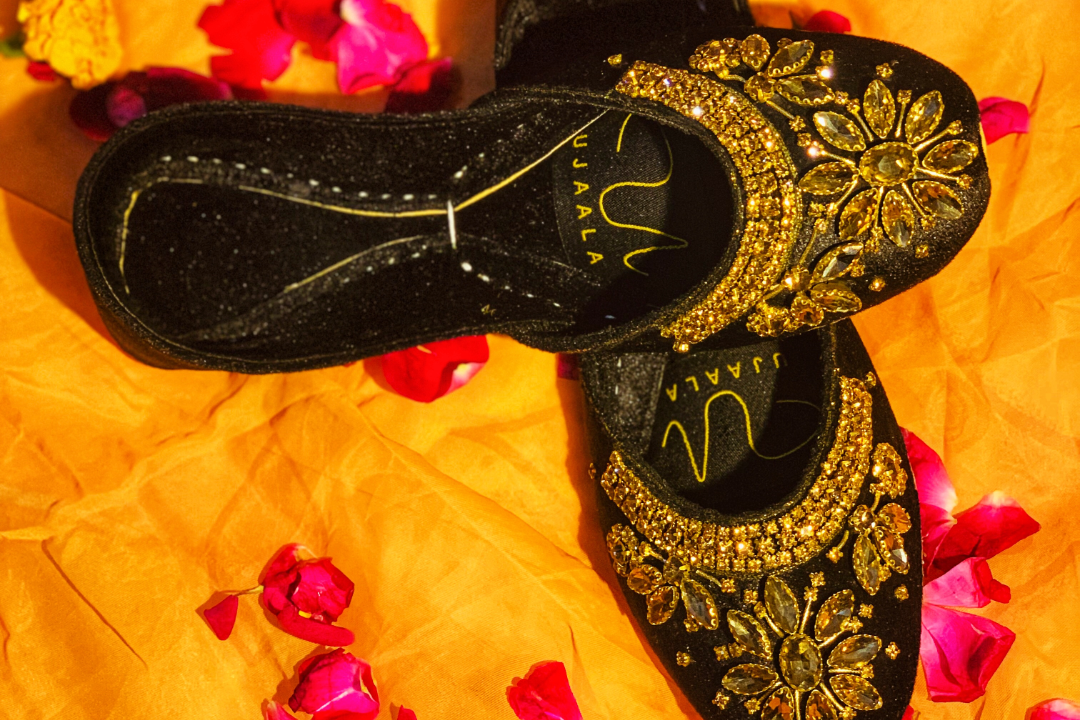
The Cultural Significance of Juttis and Khussas in Traditional Celebrations
When it comes to traditional footwear that exudes timeless elegance and cultural heritage, few styles can match the charm of Juttis and Khussas. These handcrafted shoes, with their intricate designs and vibrant colors, have been a staple in South Asian fashion for centuries. But beyond their aesthetic appeal, Juttis and Khussas hold deep cultural significance, especially in traditional celebrations. Let's explore the rich history, cultural relevance, and the role these beautiful footwear pieces play in various festivities.
A Glimpse into the History of Juttis and Khussas
Juttis and Khussas trace their origins back to the Mughal era in South Asia, where they were worn by royalty and nobility. Crafted from leather and adorned with fine embroidery, precious stones, and gold or silver threads, these shoes were considered a symbol of status and sophistication. Over time, the craftsmanship of Juttis and Khussas evolved, with artisans infusing regional styles and techniques, making them unique to different areas such as Punjab, Rajasthan, and Sindh.

Symbolism in Traditional Attire
Juttis and Khussas are not just footwear; they are an integral part of traditional attire. Their designs often feature motifs inspired by nature, such as flowers, leaves, and animals, symbolizing prosperity, fertility, and joy. For instance, peacock motifs, which are quite popular, represent beauty and grace, while lotus patterns signify purity. The choice of colors also carries cultural meanings—red is often associated with marriage and love, while gold represents wealth and power. These symbolic elements make Juttis and Khussas a perfect match for traditional celebrations, where each aspect of attire is chosen with intention and care.
The Role of Juttis and Khussas in Weddings
Weddings are one of the most significant celebrations where Juttis and Khussas take center stage. For both brides and grooms, choosing the right pair is as important as selecting the wedding outfit. Juttis and Khussas complement traditional bridal wear, such as lehengas and sherwanis, adding an element of elegance and heritage. Often, brides opt for intricately embroidered Juttis that match their outfit, while grooms choose Khussas with minimal yet classy embellishments.
In some cultures, there's even a playful tradition involving these shoes—after the wedding ceremony, the bride’s sisters hide the groom's Khussas, demanding a ransom for their return. This light-hearted ritual adds a fun twist to the festivities, highlighting the cultural significance of the footwear.

Festivals and Religious Celebrations
Juttis and Khussas are also prominently featured during major festivals like Diwali, Eid, Holi, and Navratri. During these festivities, people dress in their finest traditional clothes, and a beautiful pair of Juttis or Khussas completes the look. The vibrant colors and detailed embroidery of these shoes perfectly match the joyous spirit of these celebrations. For example, during Eid, men and women pair their new outfits with Khussas and Juttis, respectively, as a symbol of respect and adherence to tradition. Similarly, during Diwali, wearing new clothes and shoes, including Juttis, is a common practice believed to bring good luck and prosperity.
Cultural Identity and Pride
Wearing Juttis and Khussas is also a way of expressing cultural identity and pride. These shoes are often handcrafted by skilled artisans, preserving age-old techniques and traditional craftsmanship. By choosing to wear them, individuals not only celebrate their cultural heritage but also support local artisans and sustainable fashion. In an era where fast fashion often overshadows traditional crafts, Juttis and Khussas stand as a testament to the beauty of handmade, culturally rich attire.
A Modern Twist on Tradition
While Juttis and Khussas are deeply rooted in tradition, they have also evolved to keep pace with modern fashion trends. Today, these shoes come in a variety of designs, from classic to contemporary, making them suitable for both traditional and casual wear. Fashion designers are continually experimenting with materials, colors, and patterns, making Juttis and Khussas a versatile addition to any wardrobe. Whether paired with jeans or a traditional sari, these shoes add a touch of elegance and cultural flair to any outfit.
Conclusion
Juttis and Khussas are more than just footwear—they are a reflection of cultural heritage, a celebration of craftsmanship, and an essential part of traditional celebrations. From weddings to festivals, these shoes play a significant role in enhancing the overall cultural experience, symbolizing joy, prosperity, and cultural pride. As we continue to celebrate our traditions and embrace our cultural roots, Juttis and Khussas will undoubtedly remain an enduring symbol of our rich heritage. So, the next time you step into a pair of these beautifully crafted shoes, remember that you are not just wearing a piece of fashion, but a piece of history.
